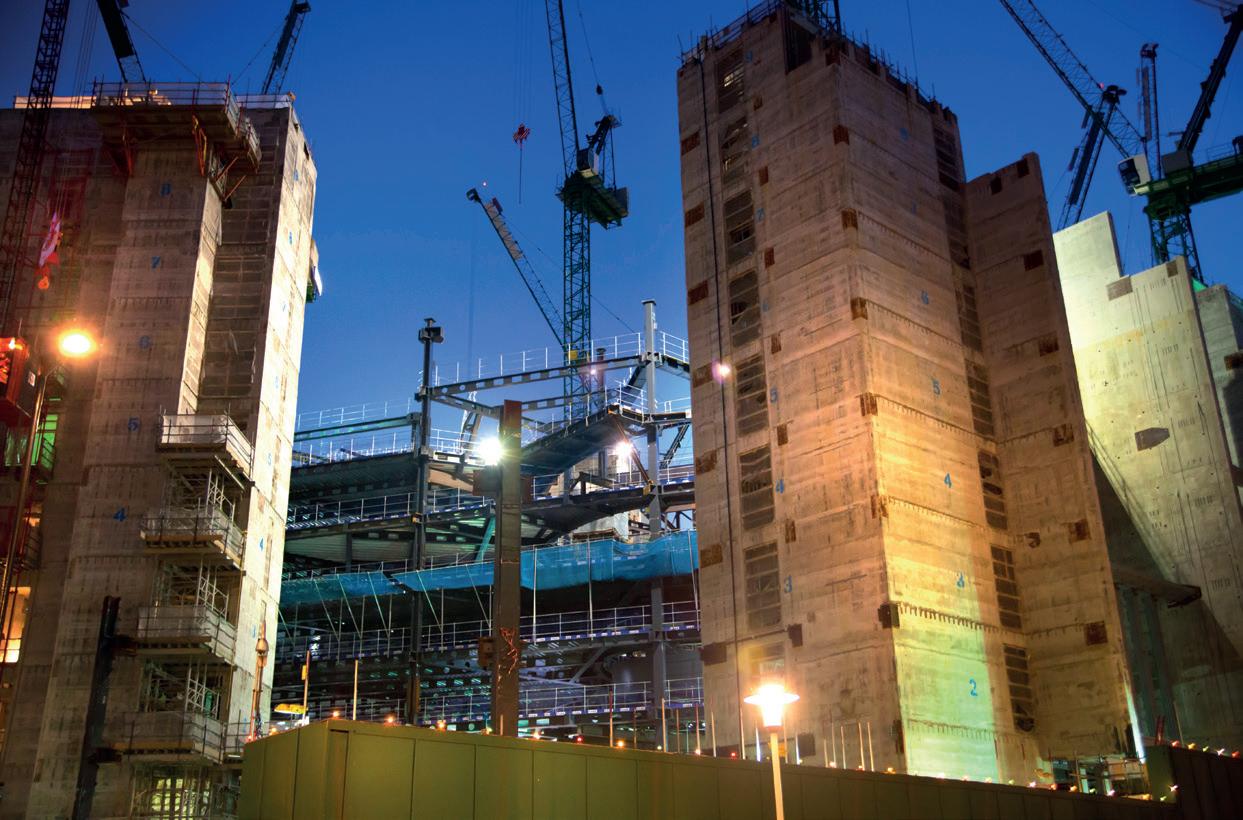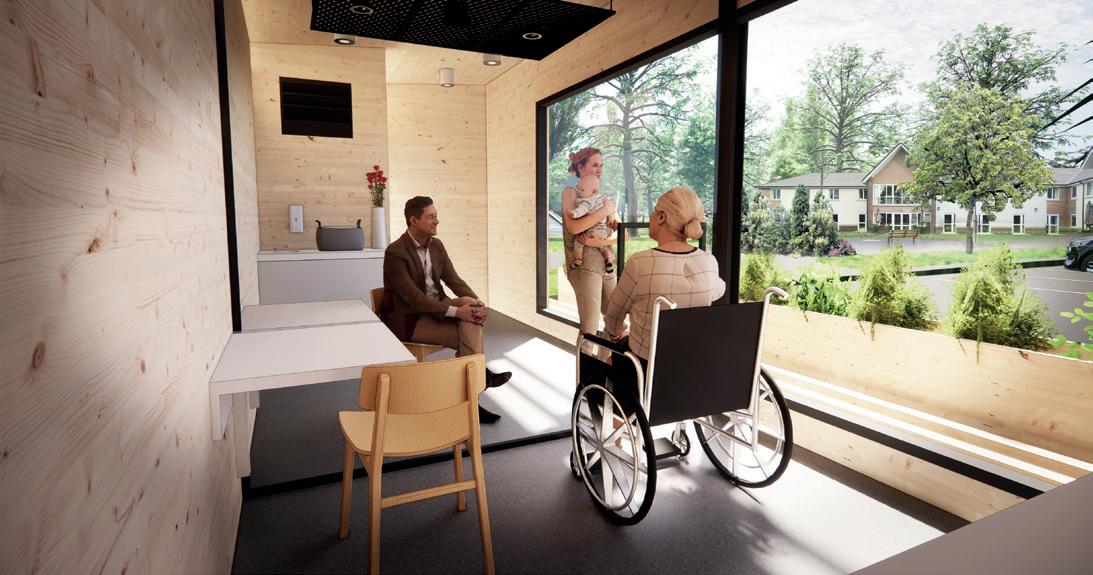
5 minute read
BIM
HOW BIM IS TRANSFORMING CONSTRUCTION
Major construction projects are becoming increasingly more complex, involve multiple task teams and span several years, making projects fraught with challenges. As individual task teams work in isolation from other members of the delivery team, the result is unsynchronised processes and procedures with no defined standards for quality control. As a result, issues are only identified as work commences on site, causing abortive work and wasted materials which all come at a cost to the project and the environment, says Paul Hargreaves, Group BIM Manager at TÜV SÜD.
Advertisement
TÜV SÜD
Building Information Modelling (BIM) is the process of working collaboratively to mitigate these risks using one “single source of truth”. The BIM process not only refers to the production of a 3D model but all the processes and procedures that monitor the progress of a construction project from cradle to grave, irrespective of project size.
BIM, also commonly referred to as digital engineering, utilises the progressive development of a 3D virtual construction model during design, construction and post-occupancy, allowing the separate parties to address issues well before construction begins.
BIM also enables the creation of multiple ‘what-if’ scenarios, so alternative approaches can be evaluated, allowing a more iterative approach during the project. As BIM facilitates more effective management throughout the entire project lifecycle, it can also contribute to the realisation of larger project goals such as improved energy efficiency, healthier environments for occupants, and increased environmental sustainability.
The stages of BIM
The BIM maturity levels are:
Stage 0 – unmanaged CAD
Stage 1 – managed CAD (2D and 3D)
Stage 2 – developing building information in a collaborative 3D environment using separate discipline models. The UK Government’s Construction Strategy now has a minimum requirement for stage 2 BIM on centrally procured public projects.
Stage 3 – potentially utilising cloud-based modelling but more focused around the operation phase of the built asset and how data recorded from the built asset can influence future decision-making.
The benefits of adopting BIM
In our own analysis of previously digitised industries and audits of BIM adopters, TÜV SÜD have identified additional important drivers of increased profitability, resulting from the adoption of BIM technologies. In total, the six most dominant drivers include:

1. Better asset quality and usability
When used for digital prototyping, the BIM methodology helps to keep design and construction activities focused on the key performance indicators (KPIs) as defined by the investor or asset holder. It enables lifecycle analytics and operational metrics to be embedded into the earliest stage of a project.
2. Improved information and decision management
BIM supports more effective and more confident decisions by combining virtual inspections and visualised information in a way that facilitates understanding by building owners and investors. This can dramatically reduce the number of changes and corrective actions, greatly improving the likelihood that a project will be completed on schedule and within budget.

3. Greater project efficiency
By centralising all projectrelated data and virtualising communication and collaboration, BIM enables real-time access across disciplines and locations, providing all parties with continuous access to accurate and up-to-date project information. In addition, project scheduling is more accurate and easier to monitor, supporting more efficient and streamlined processes with traceable responsibilities and visual coordination.
4. Increased transparency
The transparency of project information generated by BIM makes it easier to identify and resolve discrepancies and errors related to design, materials, construction and documentation. Model checks for spatial, material, cost and schedule issues provide building owners and investors with increased insight into their project. This allows them to communicate more effectively with engineers and architects and increases accountability. Operational safety, regulatory and legal issues are also clearly documented so that asset holders have a clear understanding of all relevant matters.
5. Uprated sustainability outcomes
BIM supports the collaboration between architects, engineers, service designers and facility managers in evaluating multiple energy usage scenarios in the context of other project requirements. This allows the delivery team to adjust construction specifications and materials to maximise natural resource efficiencies. This can result in reduced operational costs as well as a higher asset value (e.g. by supporting a higher level of sustainability certification).
6. Overall operational excellence
BIM models can serve as an object-related database for CAFM, CMMS and ERP systems that allow data from actual operations to be fed into and out of the BIM model, allowing for further BIM model refinement and modifications to lifecycle management practices, and generating updated performance benchmarks. TÜV SÜD uses the term BIM-to-computer-aided facility management systems (BIM2CAFM) to describe the strategic, tactical and operational implementation of BIM models in the operational phase.
It is important to note that these key benefits are achieved only when the BIM methodology is adopted to its full potential and executed in the three dimensions of strategy, tactics and operation. In projects where BIM has not been effectively implemented or executed, we have seen costs soaring over the initial construction budget by between 10 and 30%. There have also been situations where there has been an increase of between 40 to more than 100% in the time invested during the design stage, often caused by reprogramming incorrect data standards or redeveloping BIM models.
BIM is a change to the traditional methods in which the industry works, and peak efficiency will not occur overnight. It is clear that BIM has the potential to increase efficiency and reduce construction costs during the

planning, design and execution stages, while also improving overall project quality and utility. Building owners, investors and asset holders would benefit from the effective adoption of BIM as an essential process to design, plan and operate assets over their entire lifecycle.
The architectural, engineering and construction (AEC) industry has embraced digitalisation with open arms, realising the benefits and potential it has to offer. It’s an evolving technology with a steep learning curve, which will take time to fully adopt and embed, across all sectors of the built environment. However, the ability to integrate state-of-theart materials and technologies into designs to increase usability, maximise efficiency and promote sustainability, is a prize worth fighting for.










